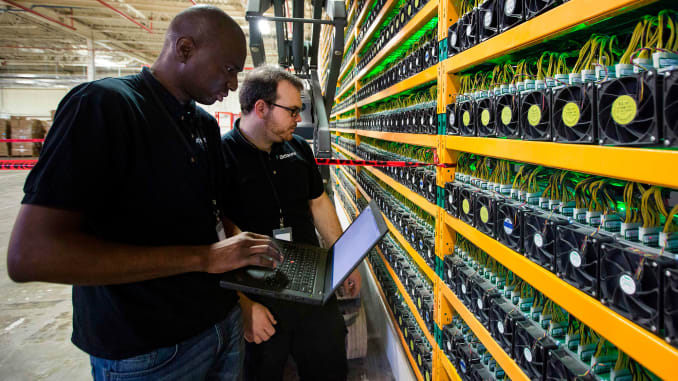
Bitcoin mining has grown into its own line of business, with companies from China taking the lead. But couldn’t one still benefit in this country from concentrating specifically on prospecting and then selling new BTC?
Bitcoin mining is a recurring topic in the crypto scene, not least because there are theses that Bitcoin miners can influence the price of BTC. It is now clear that China dominates the Bitcoin mining business worldwide. This is where the specialized hardware (ASIC miner) is manufactured and the large mining pools are based in China. But, as is well known, the Bitcoin halving took place in May 2020 and, at least in theory, changed the calculation basis for the profitability of BTC mining. So let’s take a closer look at the situation.
Bitcoin mining – how does the calculation of difficulty and profit work?
Since the most recent Bitcoin halving, there has been 6.25 BTC as a reward for unlocking a new block. The level of difficulty for this is adjusted according to 2016 new blocks (approximately every two weeks) and depends on the rate of use in the entire network, i.e. the computer capacities gathered there. Bitcoin hashrate and degree of difficulty have recently reached all-time highs and demonstrate tough competition between the Bitcoin miners, but also that the business is worthwhile for the big miners at the current prices of more than 10,000 US dollars per BTC.

In addition to the Bitcoin price, they have to keep an eye on their fixed costs. On the one hand, there are the costs of purchasing new and efficient hardware, and on the other hand, the electricity prices. An Antminer S17 + as a widespread device costs around 2,000 euros in Europe and, according to the data sheet, has a hashrate of 73 TH / s at 2920 watts of power consumption. For the big brother Antminer S19 Pro, the purchase price is around 3,300 euros at 110 TH / s and 3500 watts.
If you now interact with values like this in the calculator for mining profitability, it quickly becomes clear that the break-even point for profitable Bitcoin mining is currently within reach at electricity prices of 10 cents per kWh. In Germany, however, 30 cents per kWh are more likely to be budgeted for and profitable Bitcoin mining is simply impossible when you factor in the electricity price and hardware costs. It looks completely different in China, where electricity is available for around 5 cents per kWh in certain regions. In addition, there are no high transport costs, fees for currency exchange and surcharges from resellers for the ASICs.
Is Cloud Mining Profitable?
Cloud mining was particularly popular in 2017 and 2018. It turned out, however, that a lot of dubious providers have worked in this area. For successful miners, it also makes no sense to offer cloud mining. So everyone is advised to keep their hands off cloud mining.
Alternative approaches to profitable Bitcoin mining
In the US, projects have attracted attention in which power plants use excess energy for Bitcoin mining in times of low demand. A start-up called Layer1 wants to take a different path with star investor Peter Thiel. Layer1 wants to generate cheap solar and wind power in Texas itself and even develop its own ASICs. In Germany, the listed Northern Data AG recently had to experience doubts about its business model because the price of electricity, acquisition costs for hardware and income do not really match.
Conclusion: leave Bitcoin mining to the professionals
For you as an investor, one thing is certain with these model calculations: There is no money to be made with your own Bitcoin mining from Europe and would only be interesting again with new all-time highs in the price of BTC. However, the hashrate and degree of difficulty in the Bitcoin blockchain remain good indicators for you of how profitable professional miners are and whether they are – as they are currently – optimistic about the future. For investors, it is always better to buy the Bitcoin directly or trading btc.
